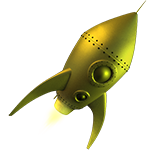Hackers Хакеры, complaints Жалобы
Некоторые люди используют сообщение о злонамеренных пользователях как способ заблокировать меня, пока они атакуют.
Some people use reporting malicious users as a way to block me while they attack.
Some people use reporting malicious users as a way to block me while they attack.
24 Апреля 2024 19:27:03
«
· General Discussion ·
»
Информация
Вы не авторизованы
1 чел. читают эту тему (гостей: 1)
Пользователей: 0 Claude Bot



